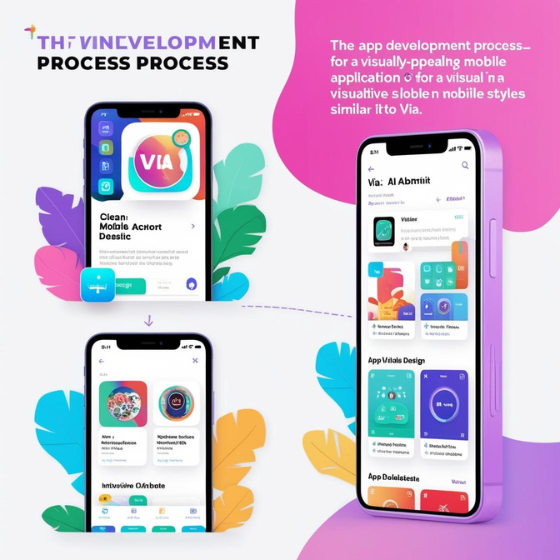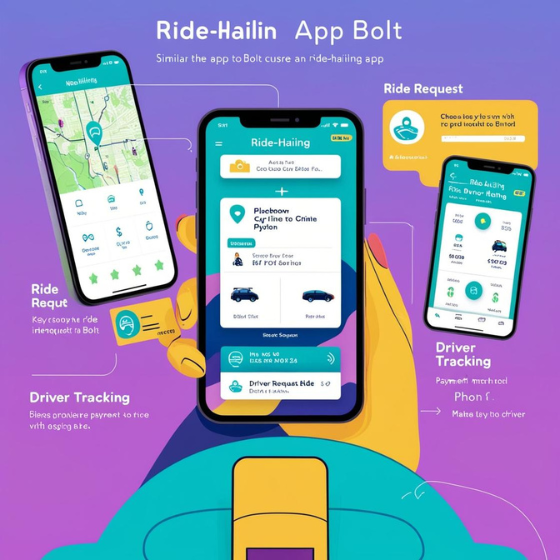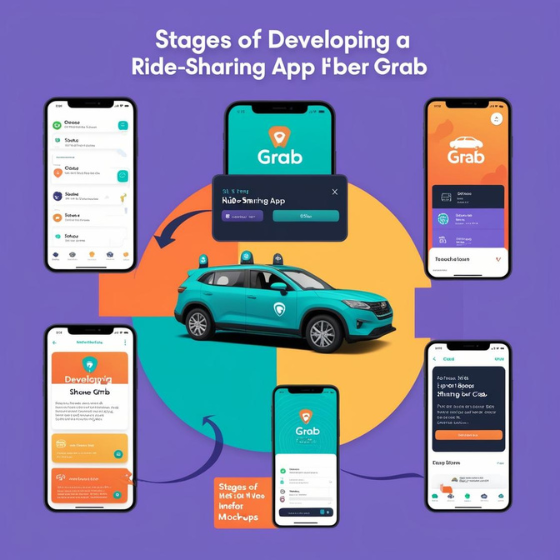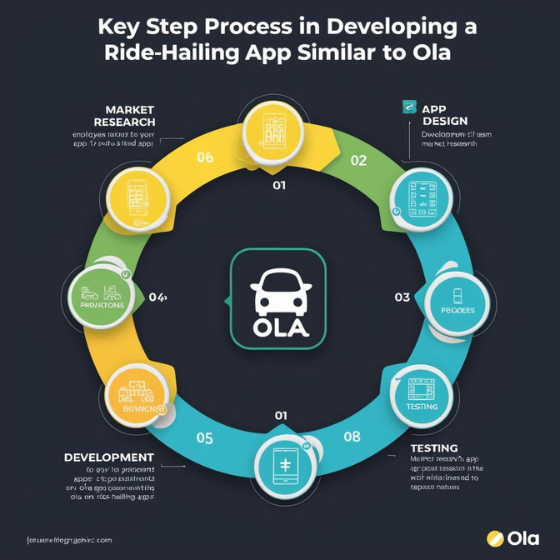How to Make an App Like Curb: A Step-by-Step Guide to Creating Your Own Ride-Hailing App
The ride-hailing industry has experienced explosive growth over the past decade, revolutionizing the way people travel. In fact, as of 2024, the global ride-sharing market is expected to exceed $100 billion. With companies like Uber, Lyft, and Curb leading the charge, the demand for innovative transportation solutions has never been higher. If you’ve ever wondered, “How to make an app like Curb,” this blog is for you. Whether you’re a startup looking to break into the ride-hailing industry or an entrepreneur exploring new app ideas, this guide will walk you through the essential steps of creating a successful ride-hailing app like Curb.
Why Creating a Ride-Hailing App Like Curb is a Great Idea
The rise of on-demand transportation services has transformed how people commute, offering unparalleled convenience and efficiency. Apps like Curb have become integral to everyday life, enabling users to easily hail rides, track vehicles in real-time, and make payments—all through their smartphones. But how can you tap into this thriving market and create an app that stands out from the competition?
Creating an app like Curb isn’t just about building a platform for ride-hailing; it’s about offering a seamless, user-friendly experience that keeps passengers and drivers engaged. By understanding how to make an app like Curb, you can position yourself to take advantage of the growing demand for ride-hailing services while offering unique features that meet the evolving needs of modern commuters.
Step 1: Define Your App’s Core Features and Functions
Before you dive into the technical aspects of app development, it’s crucial to outline the core features that your app will offer. Ride-hailing apps like Curb have several essential functions that make them indispensable to users:
- User Registration and Profile Creation: Passengers and drivers need to create accounts to use the app. For passengers, this means providing personal details, payment information, and preferences. Drivers need to submit information like driver’s licenses and vehicle details for verification.
- Ride Booking: A user-friendly interface for booking rides is crucial. This feature should allow users to select pick-up and drop-off locations, view available vehicles, and choose ride types (economy, premium, etc.).
- Real-Time Tracking: One of the defining features of apps like Curb is real-time GPS tracking. Passengers can track their ride’s location, estimated time of arrival, and other key details, ensuring transparency and trust.
- Payment Integration: Secure, seamless payment gateways are a must. Whether it’s credit/debit cards, digital wallets, or cash payments, users should have multiple options for completing transactions.
- Ratings and Reviews: After each ride, passengers and drivers can rate each other. This feature helps maintain quality control and fosters a sense of accountability within the community.
These core features form the backbone of your ride-hailing app. However, you can further enhance your app by adding unique features that set it apart from competitors like Curb. Think about how you can offer a more personalized, customer-centric experience.
Step 2: Choose the Right Technology Stack for Your App
When asking, “How to make an app like Curb,” one of the most important decisions you’ll need to make is selecting the right technology stack. This includes the programming languages, frameworks, and tools that will power your app. Below are the key components you’ll need to consider:
- Mobile Platforms: Decide whether you want to build your app for iOS, Android, or both. The most popular approach is to develop a native app for each platform, but you can also explore cross-platform frameworks like React Native for faster development.
- Backend Infrastructure: The backend of your app will handle crucial functions like user authentication, ride requests, payments, and notifications. Popular backend frameworks include Node.js, Ruby on Rails, and Django.
- GPS Integration: Since real-time tracking is a critical component of a ride-hailing app, you’ll need to integrate GPS and mapping services. Google Maps API and Mapbox are popular options for GPS navigation and geolocation tracking.
- Payment Processing: Integrate a secure payment system to handle transactions smoothly. Stripe and PayPal are widely used for mobile app payments and offer easy integration.
- Push Notifications: To keep users updated on ride statuses, driver arrivals, and promotions, push notifications are essential. Firebase Cloud Messaging (FCM) or OneSignal are two great options for sending notifications.
Once you’ve selected your technology stack, it’s time to start building the app. However, developing an app like Curb requires expertise in both frontend and backend development. If you’re not familiar with these technologies, working with an experienced development team is crucial to ensure your app is scalable, secure, and reliable.
Step 3: Focus on User Experience (UX) and User Interface (UI) Design
When developing a ride-hailing app like Curb, the design of your app plays a significant role in user satisfaction. An intuitive, easy-to-use interface can make or break your app’s success. Here are a few key design principles to follow:
- Simple Navigation: Ensure that users can easily navigate through the app, from booking a ride to making a payment. Avoid clutter and keep the user interface (UI) clean and minimal.
- Fast Loading Times: Speed is critical. Users expect instant gratification, so your app should load quickly and respond promptly to user actions.
- Customizable Options: Allow passengers to customize their ride preferences (e.g., quiet ride, pet-friendly, etc.) and drivers to manage their availability and ride preferences.
- Safety Features: Implement features like SOS buttons, in-app ride tracking for friends and family, and background checks for drivers to enhance safety and trust.
By prioritizing a smooth and engaging user experience (UX), your app will gain higher ratings, positive reviews, and more loyal users. At Sodio, we specialize in creating user-centered designs for apps like Curb, ensuring that both drivers and passengers have a seamless experience.
Step 4: Implement a Robust Backend System for Scalability
As your app grows, it’s essential to have a robust backend system that can handle increased user traffic, ride requests, payments, and data processing. A scalable backend will ensure that your app can handle spikes in demand, such as during rush hours or special events.
Consider using cloud infrastructure like AWS or Google Cloud to ensure your backend is scalable, secure, and flexible. With cloud computing, you can scale your app’s server capacity based on demand, ensuring optimal performance at all times.
Step 5: Test, Launch, and Market Your App
Once your app is developed and tested, it’s time to launch it on the App Store and Google Play Store. However, before you release it to the public, thorough testing is essential to identify and fix bugs, enhance performance, and ensure that all features work as expected.
After launching, the next step is to market your app. Use digital marketing strategies like social media ads, search engine optimization (SEO), and influencer marketing to spread the word and attract users. Offering promotions and discounts for early adopters can also help you build an initial user base.
Conclusion: Taking the First Step Towards Your Own Ride-Hailing App
Creating an app like Curb involves a deep understanding of both the technical and business aspects of the ride-hailing industry. From defining the app’s core features and choosing the right technology stack to designing an intuitive user interface and ensuring scalability, there are many steps involved in building a successful app. However, with the right strategy, development team, and marketing efforts, you can create an app that revolutionizes the way people commute.
At Sodio, we have the expertise to guide you through every stage of app development. If you’re ready to take the next step in building your own ride-hailing app like Curb, contact us today to schedule a consultation and explore our services. Our team is ready to turn your idea into a reality!







